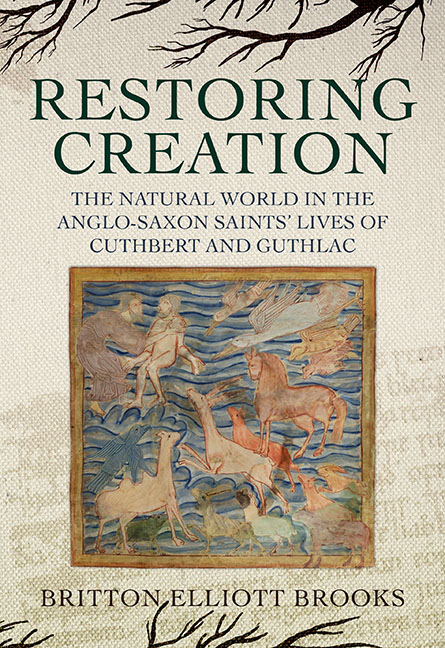 Restoring Creation: The Natural World in the Anglo-Saxon Saints' Lives of Cuthbert and Guthlac
Restoring Creation: The Natural World in the Anglo-Saxon Saints' Lives of Cuthbert and Guthlac Published online by Cambridge University Press: 18 September 2019
MORE THAN TWENTY years after completing the VCM, sometime near 721, Bede returned to Cuthbert with his prose Vita Sancti Cuthberti (VCP). This return seems, at first, paradoxical: Bede's VCM was composed as the poetic companion piece to the VCA, in the opus geminatum tradition, and its completion signalled the conclusion of the unit. Scholars have long debated Bede's intentions in composing another (prose) life of Cuthbert. The most widely accepted view, synthesised by Thacker, is that Bede's alterations to his source material from the VCA stemmed from his desire for ecclesial reform. This argument is supported by Bede's use of Cuthbertine material in the Historia which, in Thacker's words, places the Cuthbert of the VCP as the conclusion to and ‘finest fruit’ of ‘the conversion initiated by Gregory the Great’. Bede returns a third time to the life of Cuthbert in his Historia, inserting select stories as the conclusion to Book IV. This placement of Cuthbertine material highlights Bede's lifelong fascination with the saint, as well as providing evidence for his refashioning of Cuthbert as a saint with wide appeal. Bede's adaptation of Cuthbertine material in the VCP and Historia transforms the relationship between Cuthbert and Creation, from the model of static sanctity presented in the VCA and VCM into a developmental sanctity that ultimately leads to the restoration of select portions of Creation. Bede's particular conception of the sanctity towards which Cuthbert is journeying is firmly fixed in a Gregorian form of monasticism, but is augmented with a model of spiritual progression based on the Evagrian Vita Antonii. The movement towards an idealised Gregorian monk-pastor as saint is framed as a progression within the Antonian model, whereby Cuthbert's transition from ascetic to cenobite, and eventually bishop, is based upon individual moments of spiritual progression. Bede combines this saintly process in the VCP with his clearly didactic purpose for the work, which seeks to interpret and provide exegesis for the events in Cuthbert's life, as well as to highlight Cuthbert's pastoral excellence and subsequent emulative behaviour. Bede presents Cuthbert primarily as a reformer who transforms the already Christian into something more holy.
To save this book to your Kindle, first ensure [email protected] is added to your Approved Personal Document E-mail List under your Personal Document Settings on the Manage Your Content and Devices page of your Amazon account. Then enter the ‘name’ part of your Kindle email address below. Find out more about saving to your Kindle.
Note you can select to save to either the @free.kindle.com or @kindle.com variations. ‘@free.kindle.com’ emails are free but can only be saved to your device when it is connected to wi-fi. ‘@kindle.com’ emails can be delivered even when you are not connected to wi-fi, but note that service fees apply.
Find out more about the Kindle Personal Document Service.
To save content items to your account, please confirm that you agree to abide by our usage policies. If this is the first time you use this feature, you will be asked to authorise Cambridge Core to connect with your account. Find out more about saving content to Dropbox.
To save content items to your account, please confirm that you agree to abide by our usage policies. If this is the first time you use this feature, you will be asked to authorise Cambridge Core to connect with your account. Find out more about saving content to Google Drive.